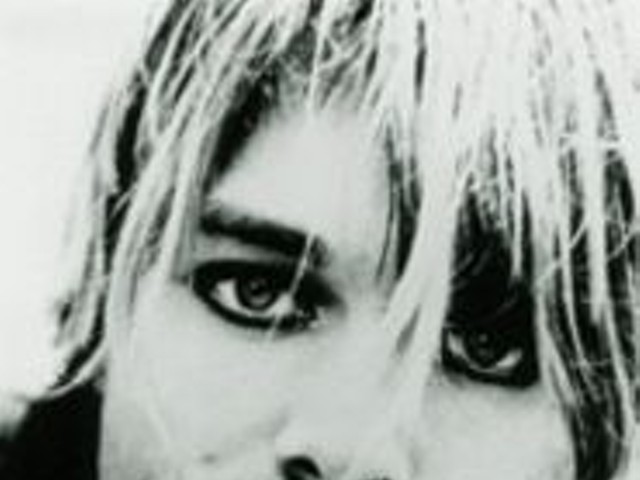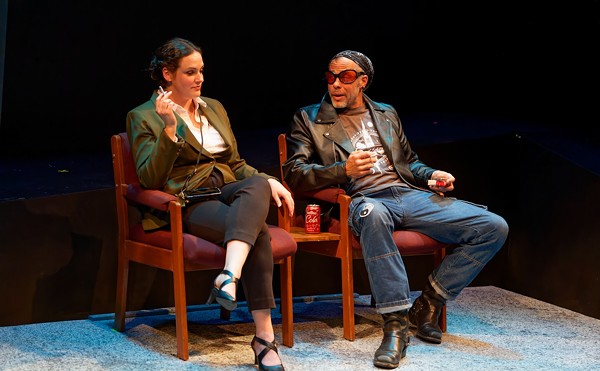This is a major accomplishment, considering the character of the Hendren Gallery, a rather unremarkable low-ceilinged lobby space in the art building, separated from a small courtyard by a window wall. Passanise identified the strongest features of the site -- the dark stone floor tiles, the strong geometry of the skylight, the window and the courtyard itself -- and drew on them to create a set of sculptural installations that transform and transcend the architecture.
"Shadow of Resistance (For M.P.)," the largest piece in the show, consists of rich black molding sand scattered on the floor. A flame of copper mesh hovers over it, suspended from the skylight, catching tawny light and casting shadows over the sand field. The piece suggests transformation by fire, a motif that extends to all of the works in the show.
Nearby, "Indelicate Intercourse" marks its own territory on the floor. A cone made of glass shards lies opposite a cast-bronze cone; between them is a field strewn with glass and nails that seems somehow tense, dangerous and magnetically charged. But closer observation reveals the piece's more fragile qualities: Some of the nails are actually fashioned from clay; the shards of glass echo the crystalline shapes in the gallery's skylight; and the bronze cone, which at first glance appears black, begins to offer up subtle greens, purples and golds.
This piece also gestures toward the window wall, which Passanise uses as another working surface, attaching to it hundreds of translucent pink bougainvillea petals that appear to have been frozen in a gentle descent. Through the window, two more works are visible in the courtyard: "Le Petite Morte," a flat wax slab partly melted and punctuated with matchsticks; and "Heartland," another field of molding sand containing a cast bronze heart and broken, burned chunks of a casting mold.
"Heartland" is exposed to the elements, and it bears their marks. Wind has eroded parts of the field, producing tiny veinlike sand dunes across its surface. Leaves blowing over the sand have marked it with their own kind of calligraphy. And yet the geometry of the floor tiles breaks through it all, a reminder that though the work is outdoors, it is not beyond the reach of architecture.
There are endless ways to view this show, innumerable angles of approach and subtle connecting threads that wend their way among all of the pieces. It's worthwhile to discover them all -- how the pink petals on the window pick up the purples in the nearby bronze cone, or how the shadows of tree branches echo the breakage patterns in the wax slab. This show will look different every time it's viewed, depending on the time of day and the light, depending on whether one views it from the outdoor courtyard or from the indoor space.
That said, "indoors" and "outdoors" are precisely the kinds of distinctions that Passanise's work discourages us from making. In this show, boundaries between spaces, between pieces, between the inside and the outside become blurred. Taken together, the pieces weave a tissue of metaphysical connections that transcend material limitations. And they function together with the space to create a work that is greater than the sum of its individual parts.





